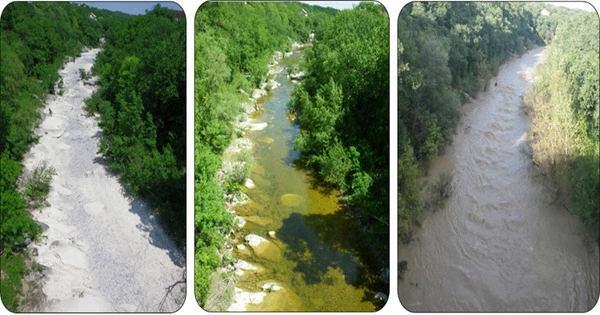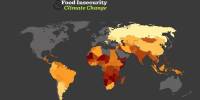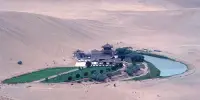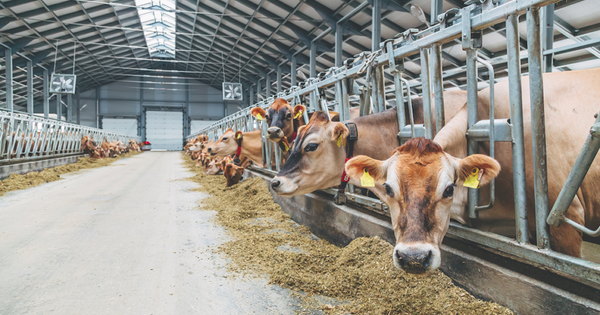More than half of the world’s river network is made up of temporary or intermittent rivers: those that, at certain times of the year, primarily in the summer, have dry riverbeds or isolated ponds. These rivers are highly variable, both spatially and temporally, making it impossible to apply the same tools used to assess the health of permanent rivers to them.
A study led by University of Barcelona researchers, recently published in the journal Ecological Indicators, has identified new potential biological indicators – organisms such as insects and other water invertebrates – that will be used to assess the human impact on the quality of the waters in these rivers, which are home to a significant fraction of both terrestrial and water biodiversity.
The study examined the aquatic invertebrates present in intermittent rivers and classified them based on their resistance to the duration and frequency of dry phases, using data from 33 rivers in Catalonia. These findings may allow managers to modify some of the indices currently used in Spain, such as the IBMWP index (Iberian BioMonotoring Working Party score system), which assesses human impacts on water quality but is not appropriate for this type of intermittent river.
Our approach could lead to the identification of taxa and indicators that respond to anthropogenic impacts and not to the stress of the dry or terrestrial phase. In other words, the fact that a species does not appear in an intermittent river does not necessarily mean that it is due to anthropogenic pollution; perhaps it is because that species does not have the necessary adaptations to survive in such fluctuating ecosystems.
Rebeca Arias-Real
The study, led by Professor Isabel Muñoz, includes the participation of the researchers of the Department of Evolutionary Biology, Ecology and Environmental Sciences of the Faculty of Biology of the UB Rebeca Arias-Real first author of the study and Margarita Menéndez. Among the participants is also Cayetano Gutiérrez-Cánovas, researcher at the Doñana Biological Station (EBD) of the Spanish National Research Council (CSIC).
Searching for indicators of anthropogenic impacts
Despite the extent and importance of intermittent rivers, these ecosystems have been excluded from almost all conservation and assessment programmes, because it is very difficult to establish reference conditions, due to the different aquatic and dry phases they go through. “Current biomonitoring tools are based on species living in permanent rivers and are therefore not efficient if we apply them, without adaptations, to intermittent rivers,” says Isabel Muñoz.

The organisms found in these intermittent rivers have adaptations that allow them to live in conditions that alternate between aquatic and terrestrial phases. The study’s goal is to discover which species can live in intermittent rivers and under what hydrological conditions, in order to adapt and modify current indices for assessing river ecological status.
“Our approach could lead to the identification of taxa and indicators that respond to anthropogenic impacts and not to the stress of the dry or terrestrial phase,” notes Rebeca Arias-Real. “In other words, the fact that a species does not appear in an intermittent river does not necessarily mean that it is due to anthropogenic pollution; perhaps it is because that species does not have the necessary adaptations to survive in such fluctuating ecosystems.”
Aquatic invertebrates resistant and sensitive to dry phases
With this aim, the researchers measured hydrological variables of intermittent rivers, such as the exact number of days the rivers were “dry” or the number of times they dried up during the course of a year. “In recent years, the use of sensors capable of measuring temperature or water level in situ has provided us with more and more quantitative approximations that help us to better understand the effect of intermittent flow on biodiversity,” says Rebeca Arias-Real.
Using these variables and the detailed study of the characteristics, abundance and density of aquatic invertebrates in the different hydrological phases, the researchers were able to construct the hydrological niches of these organisms, i.e. their limits of resistance to desiccation. With the results ready, four different groups of invertebrates were established: one sensitive to desiccation and three with different levels of resistance.
Thus, species with dry-phase resistant niches could be used to develop or adapt current biomonitoring indices and establish reference conditions for intermittent rivers, whereas species with sensitive niches “should be excluded from the indices, because their absence is due to the impossibility of their presence, not to anthropic impacts,” says Rebeca Arias-Real.
“For example, we identified pollution-sensitive taxa with partial desiccation tolerance, such as Lepidostoma; moderate, such as Corduliidae; or high, such as Nemoura, which could serve as potential bioindicators for intermittent rivers,” she continues.
Intermittent rivers and climate change
These findings pave the way for the use of this methodology in other regions and with other species to improve the conservation of these ecosystems, which are expected to grow in importance in the coming years. “It is expected that many rivers that are now permanent will become intermittent due to climate change (increase in temperature and decrease in rainfall), and that those that are already intermittent will increase the frequency and duration of their dry phases,” warns Rebeca Arias-Real.
As a result, the researcher believes it is critical “to continue working to understand how biodiversity responds to the continuous cycles of water and dry phases and how this affects its functioning in order to make progress in the conservation of these unique ecosystems.”
















